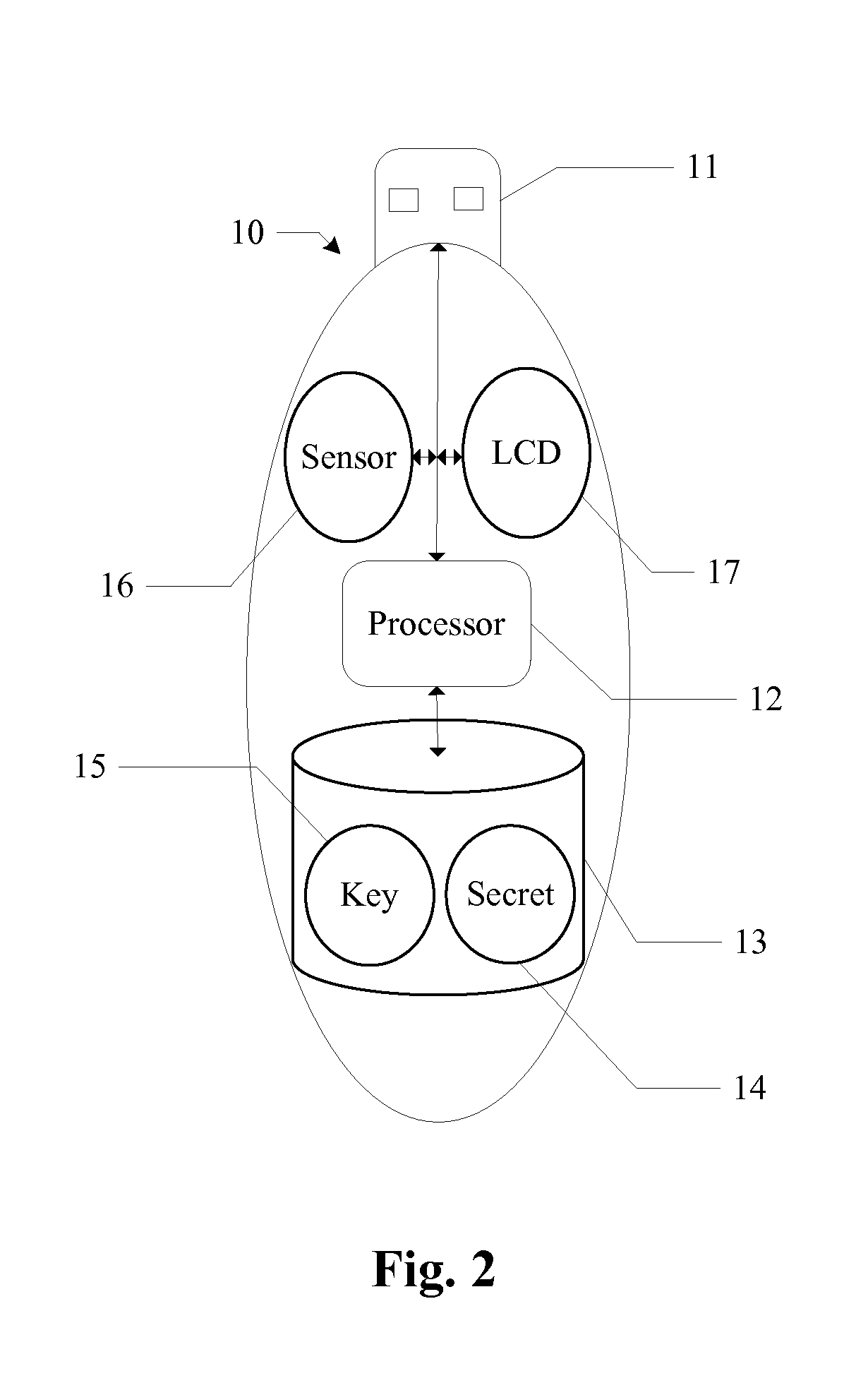Method of Authenticating a User on a Network
a network authentication and user technology, applied in the field of electronic information security, can solve the problems of generating tremendous collective anxiety among executives, it professionals, home users alike, and affecting the reputation or bottom line of the company, and achieving the effect of facilitating the end user's viewing of the readout and compromising the security of the system
- Summary
- Abstract
- Description
- Claims
- Application Information
AI Technical Summary
Benefits of technology
Problems solved by technology
Method used
Image
Examples
Embodiment Construction
[0016]In the following detailed description of the preferred embodiments, reference is made to the accompanying drawings, which form a part hereof, and within which are shown by way of illustration specific embodiments by which the invention may be practiced. It is to be understood that other embodiments may be utilized and structural changes may be made without departing from the scope of the invention.
[0017]Client computer 20 commonly operates in a networked environment using logical connections to one or more additional remote computers, such as similar remote computers, routers, networked PCs, peer devices or other common network nodes. In an exemplary embodiment, client computer 20 is in bidirectional communication with server 30. Examples of logical connections include local area networks (LAN) and wide area networks (WAN); which are known. Such networks connections are well known in the art and other means of establishing communication between the computers may be used withou...
PUM
 Login to View More
Login to View More Abstract
Description
Claims
Application Information
 Login to View More
Login to View More - R&D
- Intellectual Property
- Life Sciences
- Materials
- Tech Scout
- Unparalleled Data Quality
- Higher Quality Content
- 60% Fewer Hallucinations
Browse by: Latest US Patents, China's latest patents, Technical Efficacy Thesaurus, Application Domain, Technology Topic, Popular Technical Reports.
© 2025 PatSnap. All rights reserved.Legal|Privacy policy|Modern Slavery Act Transparency Statement|Sitemap|About US| Contact US: help@patsnap.com



